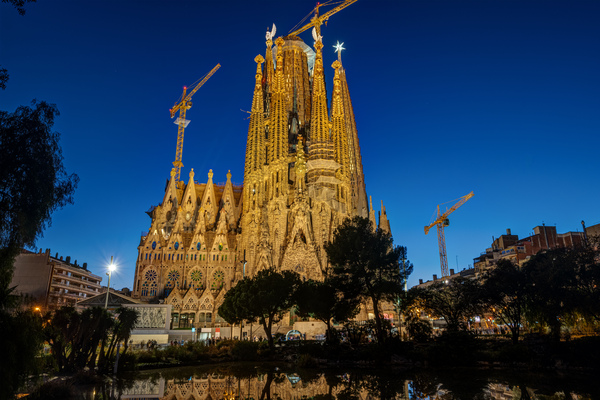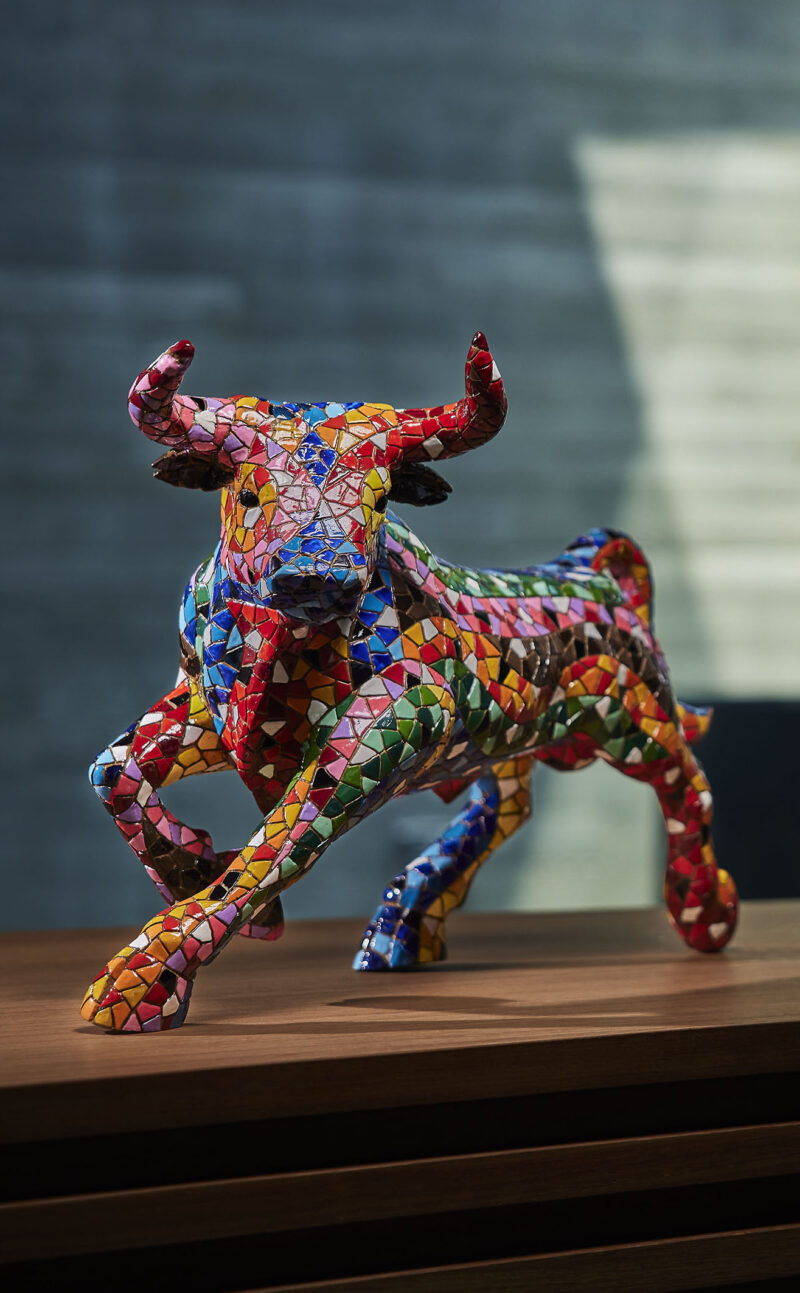
Modernist art was a groundbreaking movement that emerged in the late 19th and early 20th centuries, driven by the desire to break away from classical forms and create something entirely new. Inspired by nature, curved lines, and craftsmanship, modernism sought to permeate all artistic disciplines—architecture, painting, design, and sculpture alike.
In this article, we explore the defining features and evolution of modernist style, its main artistic disciplines, and how to experience modernism in Barcelona through its buildings, walking routes, and Gaudí-inspired objects.
Key Features of the Modernist Style and Its Evolution
Modernist art stands out for its unique aesthetic, one that rejected academic conventions and embraced creative freedom. From around 1880 to 1910, artists and architects produced works that celebrated ornamentation, asymmetry, and organic shapes drawn from nature—especially plants and animals.
One of the hallmarks of modernism is the curved line, which appears in everything from architectural forms to paintings and decorative objects. This flowing design language was often paired with meticulous detail, innovative use of materials like iron, glass, and glazed ceramics, and a strong symbolic and naturalistic influence.
Internationally, this style is known as Art Nouveau, with Paris as one of its cultural epicenters. The name itself captured a new attitude toward art: the ambition to bring beauty into everyday life—through every building, object, or visual detail.
In Barcelona, however, modernism developed a distinct identity, deeply rooted in Catalan culture and shaped by architects such as Antoni Gaudí, Lluís Domènech i Montaner, and Josep Puig i Cadafalch. One of the most recognizable elements of Catalan modernism is the use of trencadís, a decorative mosaic technique made from irregular fragments of recycled ceramic, glass, or porcelain—used to create vibrant, textured surfaces.
As industrialization accelerated in the early 20th century, modernism began to evolve. Around 1910, with the rise of the Art Déco movement, many modernist ideas were reinterpreted through a more geometric, minimalist, and rational lens. In architecture, this shift introduced new industrial materials like steel, glass, and concrete, paving the way for the modern architecture of the 20th century.
Stylistic Differences Between Art Nouveau and Catalan Modernism
| Art Nouveau (Europe) | Art Nouveau (Barcelona) | |
| Artistic application | Focused on painting, graphic design, and architecture | Primarily emphasized architecture and decorative arts |
| Featured Artists | Gustav Klimt, Victor Horta, Alphonse Mucha | Antoni Gaudí, Lluís Domènech i Montaner, Josep Puig i Cadafalch |
| Thematic | Nature, sensuality sensuality and spirituality | Nature, mythology and local tradition |
| Cultural influence | Cosmopolitan, influenced by symbolism and decadence | Regionalist, strongly tied to Catalan cultural identity |
| Architecture | Curved lines and extensive use of iron as a structural element | Organic architecture with an emphasis on total integration |
| Materials and techniques | Stained glass, wrought iron, mosaics, lithographic prints | Trencadís, glazed ceramics, artistic ironwork |
Modernist Disciplines: The Most Iconic Artists of the Movement

Modernism was a borderless movement, rooted in the idea of a “new art” that sought to harmoniously integrate all creative disciplines. Each form of artistic expression offered a unique interpretation of the modernist ideal—but all shared a common pursuit of beauty, nature, and aesthetic renewal.
Distinctive features of modernist art by discipline
| Discipline | Distinguishing features | Representative Artist | Outstanding work |
| Architecture | Use of stained glass and ceramics; asymmetrical façades with vegetal and curved forms | Antoni Gaudí | Sagrada Família / Casa Batlló |
| Sculpture | Decorative details and stylized figures using noble materials such as marble or bronze. | Eusebi Arnau | Reliefs of the Palau de la Música Catalana |
| Decoration | Floral motifs and other natural elements integrated into the art | Louis Comfort Tiffany | Tiffany Stained Glass |
How to Experience Modernist Art in Barcelona

Barcelona was the epicenter of Catalan modernism. From the late 19th century onward, the city underwent an unprecedented creative boom that shaped a truly unique architectural identity. That legacy still defines the streets of Barcelona today—where art, symbolism, and design come together to form a living showcase of modernism.
Visiting landmarks like Casa Batlló, Casa Amatller, or Casa Lleó Morera is like stepping into a visual story told through curves, stained glass, mosaics, and organic forms. Other highlights include the Sant Pau Art Nouveau Site, Palau Montaner, and the Antoni Tàpies Foundation—examples of how this style became part of the city’s cultural heritage.
Of course, no modernist experience would be complete without following in the footsteps of Antoni Gaudí, the visionary who forever changed the way we understand architecture. From Park Güell to the iconic Sagrada Família, and from Casa Vicens to the Crypt of Colònia Güell, Gaudí’s work continues to inspire artists, designers, and brands across the globe.
Spreading Trencadís: Gaudí-Inspired Art for Your Business
For companies looking to bring a touch of that artistic legacy to their customers, Barcino Designs offers an exclusive collection of handcrafted figures inspired by Gaudí and Catalan modernism. Designed and made by hand in Barcelona, these pieces capture the visual essence of trencadís and the artistic spirit of the modernist era.
With vibrant colors, organic shapes, and iconic mosaic patterns, Barcino figures are ideal for museum shops, concept stores, boutique hotels, galleries, or design fairs. Each piece is both a decorative object and a cultural artifact—an artistic souvenir that channels the essence of modernist Barcelona.
Explore our Classic Collection, and if you’re interested in distributing Barcino products at your business, fill out the contact form and we’ll be in touch as soon as possible.


